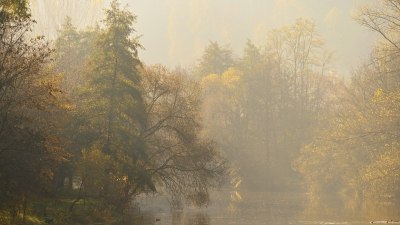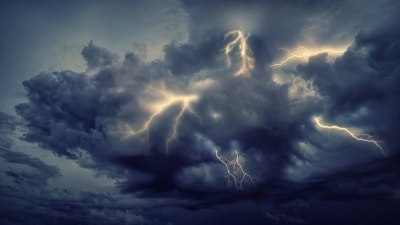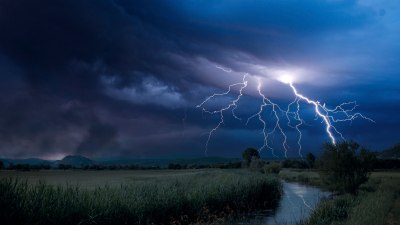Why a Morning Fog Feels Like a Free Pass to Be Mysterious for a Few Hours
Discover the allure of morning fog and its ability to cloak our surroundings in mystery and tranquility.

Image by montypeter on Freepik
The morning fog envelops us in a warm embrace, blurring the lines between reality and fantasy. It creates an atmosphere where the familiar can transform into the eerie, where the mundane can take on a character all its own. As the dawn light struggles to penetrate the thick mist, we find ourselves in a world where the everyday is cloaked in an ethereal silence, allowing for moments where the ordinary can become extraordinary.
In literature, fog has long been associated with mystery. Authors use the fog to create suspense, leading characters into unknown territories fraught with unseen dangers. In a similar vein, when we step out into a landscape dominated by fog, we are often left delineating the shapes of the world beyond the haze. Trees become silhouettes, buildings rise like spectral forms, and the sounds of the world are muted, inviting contemplation.
This phenomenon is not just a visual effect; it engages our senses in profound ways. The cool, damp air carries a refreshing scent, imbued with earthiness that feels both rejuvenating and grounding. As we traverse this shrouded environment, our senses heighten; sounds become sharper, and each step feels crucial. This heightened awareness can lead to a rich experience of our surroundings, inviting introspection and allowing us to enjoy a unique connection with nature.
The Psychological Effects of Fog
Psychologically, the presence of fog can impact our mindset. The obscured views encourage a sense of ambiguity, which can be liberating. In a world often marked by stern clarity and transparency, fog allows us to embrace uncertainty. The moments spent wandering through a foggy landscape may foster a strange comfort in confusion. This lack of clarity provides the perfect opportunity to reflect on our own thoughts without the distractions of a well-lit world.
Research shows that environments can substantially affect our mood and cognitive function. Fog has been shown to promote feelings of calmness and contemplation. The quiet that accompanies a foggy morning slows our pace of life, making space for reflection and creativity. Artists and writers often find inspiration in such settings, as the atmospheric conditions lend themselves to imaginative thinking. Everything feels like an invitation to explore not only the world around us but the depths of our own minds.
Embracing the Mystery
For many, stepping into the fog feels like donning an invisible cloak, allowing us to adopt a mysterious persona. We feel less observed and more free to express ourselves authentically. In the fog, it is easier to break from our routines and allow our imaginations to roam. There is a certain freedom in being unseen. After all, if our surroundings are enveloped in ambiguity, so too can our identities be shrouded in mystery.
With each step, we become less confined by the lenses through which we usually present ourselves. The fog creates a playful disconnect, enabling us to experiment with our thoughts and ideas as we navigate an ethereal world. We can drop the weight of expectation and simply exist in the moment. However, we define ourselves in a fog, we can be a character from a dream, an explorer in a new dimension, or an artist capturing the ephemeral essence of the world.
Symbolism of Fog in Culture
Culturally, fog is often loaded with meaning. In art and literature, it symbolizes transition and transformation. Much like life, there are moments shrouded in uncertainty—fog reminds us that change is constant and the future is frequently unclear. Embracing this uncertainty can build resilience, teaching us to navigate life's mysteries with grace rather than fear.
Many cultures hold that fog represents the space between what we know and what we don’t. It can signify the liminal—the in-between places where we find ourselves at crossroads or transitions. Just as fog can obscure the path ahead, it often indicates the discomfort associated with moving forward into new and uncharted territory. However, this discomfort is often necessary for growth and self-discovery.
Experiential Insights
The experience of walking through a foggy landscape can be deeply personal. Each person’s interaction with the fog is unique and often dependent on their mood, memories, and individual perspectives. For some, it may conjure feelings of melancholy; for others, a sense of adventure. The beauty of fog is its ability to reflect our emotional states back to us, creating a canvas for our thoughts and feelings.
Consider the serenity of a foggy morning, the stillness of the air, and the muted colors of the world around you. As you walk, notice how your thoughts shift—how your mind wanders not only through the physical space ahead but also through abstract ideas and memories. This moment is an invitation to both meditate and reflect, a reminder that even in uncertainty, there is peace.
Nature’s Lessons
Fog teaches us to find beauty in limitations. We may not be able to see far ahead, but we can still enjoy the journey. Each step brings small discoveries; the petals of flowers peeking through the veil, the leaves on trees shimmering with dew, and the gentle sounds of wildlife breaking the silence. Nature, it seems, finds ways to bring joy even when visibility is low.
Moreover, fog invites us to cultivate patience. As it gradually lifts, the world reveals itself in layers, making each moment feel more precious. In the same way, our lives unfold gradually, offering revelations at their own pace. The practice of waiting in anticipation allows us to appreciate the gradual unveiling of life’s mysteries and treasures.
Creating Personal Rituals
Morning fog can be integrated into our personal rituals to enhance our daily lives. For many, early morning walks in the fog become a cherished practice, merging physical exercise with mental reflection. It can be the time to set intentions for the day, to visualize outcomes, or to simply be present with one’s thoughts.
In addition, the early hours spent within a foggy landscape can be perfect for creative activities such as journaling, sketching, or photography. The unique lighting and mood evoke a sense of wonder that can inspire artworks or prose. It becomes a sanctuary where we can tap into our creativity free from the noise of the world.
A Mystical Connection
Ultimately, morning fog is more than just a weather occurrence; it symbolizes a bridge between the visible and the invisible, the known and the unknown. It allows us to dance between shadows, to explore the vast landscape of our thoughts, and to embrace the enigmatic facets of existence. In those fleeting moments with the fog, we discover the beauty of ambiguity and the value of mystery in our lives. Each time we engage with fog, we’re invited to feel a sense of freedom in uncertainty. So, next time the world outside is cloaked in mist, seize the opportunity to venture forth and taste the thrill of the mysterious.











